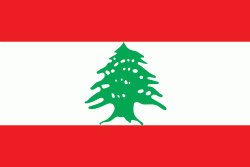Byblos (Jbaïl)
Byblos, also known as Jbeil or Jubayl (جُبَيْل, locally Jbeil ; probably Gebal), is a city in the Keserwan-Jbeil Governorate of Lebanon. It is believed to have been first occupied between 8800 and 7000BC and continuously inhabited since 5000BC, making it one of the oldest continuously inhabited cities in the world. During its history, Byblos was part of numerous civilizations, including Egyptian, Phoenician, Assyrian, Persian, Hellenistic, Roman, Fatimid, Genoese, Mamluk and Ottoman. The city is a UNESCO World Heritage Site.
It was in ancient Byblos that the Phoenician alphabet, likely the ancestor of the Greek, Latin and all other Western alphabets, was developed.
Byblos appears as Kebny in Egyptian hieroglyphic records going back to the 4th-dynasty pharaoh Sneferu (BC) and as Gubla (??) in the Akkadian cuneiform Amarna letters to the 18th-dynasty pharaohs Amenhotep III and IV. In the 1stmillenniumBC, its name appeared in Phoenician and Punic inscriptions as Gebal (???, ); in the Hebrew Bible as Geval (גבל); and in Syriac as (ܓܒܠ). The name seems to derive from (??, "well") and (??, "god"), the latter a word that could variously refer to any of the Canaanite gods or to their leader in particular. The name thus seems to have meant the "Well of the God" or "Source of the God".
Its present Arabic name Jubayl (جبيل) or J(e)beil is a direct descendant of these earlier names, although apparently modified by a misunderstanding of the name as the triliteral root or, meaning "mountain". All of these, along with Byblos, are etymologically related. During the Crusades, this name appeared in European records as Gibelet or Giblet. This name was used for Byblos Castle and its associated lordship.
The Phoenician city, known to the Greeks as Býblos (Βύβλος) and to the Romans as Byblus, was important for their import of papyrus from Egypt – to the extent that "byblos" came to mean "papyrus" in Greek. The English word "Bible", therefore, ultimately derives from the Greek name of the city.
It was in ancient Byblos that the Phoenician alphabet, likely the ancestor of the Greek, Latin and all other Western alphabets, was developed.
Byblos appears as Kebny in Egyptian hieroglyphic records going back to the 4th-dynasty pharaoh Sneferu (BC) and as Gubla (??) in the Akkadian cuneiform Amarna letters to the 18th-dynasty pharaohs Amenhotep III and IV. In the 1stmillenniumBC, its name appeared in Phoenician and Punic inscriptions as Gebal (???, ); in the Hebrew Bible as Geval (גבל); and in Syriac as (ܓܒܠ). The name seems to derive from (??, "well") and (??, "god"), the latter a word that could variously refer to any of the Canaanite gods or to their leader in particular. The name thus seems to have meant the "Well of the God" or "Source of the God".
Its present Arabic name Jubayl (جبيل) or J(e)beil is a direct descendant of these earlier names, although apparently modified by a misunderstanding of the name as the triliteral root or, meaning "mountain". All of these, along with Byblos, are etymologically related. During the Crusades, this name appeared in European records as Gibelet or Giblet. This name was used for Byblos Castle and its associated lordship.
The Phoenician city, known to the Greeks as Býblos (Βύβλος) and to the Romans as Byblus, was important for their import of papyrus from Egypt – to the extent that "byblos" came to mean "papyrus" in Greek. The English word "Bible", therefore, ultimately derives from the Greek name of the city.
Map - Byblos (Jbaïl)
Map
Country - Lebanon
 |
 |
| Flag of Lebanon | |
The earliest evidence of civilization in Lebanon dates back to 5,000 BCE. From c. 3200–539 BC, it was home to the flourishing Phoenician civilization before being annexed by various Near Eastern empires. In 64 BC, the Roman Empire conquered the region, and the region became a major center for Christianity under the Byzantine Empire. In the 7th century, the Muslim conquest of the Levant established caliphal rule. The 11th century saw the start of the Crusades and the establishment of Crusader States in the region only for it to be later reclaimed by the Ayyubids and Mamluks before being ceded to the Ottoman Empire in the 16th century. Under Sultan Abdulmejid I, the first Lebanese protostate took form in the 19th century as the Mount Lebanon Mutasarrifate, created as a home for the Maronite Christians under the Tanzimat reforms.
Currency / Language
| ISO | Currency | Symbol | Significant figures |
|---|---|---|---|
| LBP | Lebanese pound | لل | 2 |
| ISO | Language |
|---|---|
| AR | Arabic language |
| HY | Armenian language |
| EN | English language |
| FR | French language |















